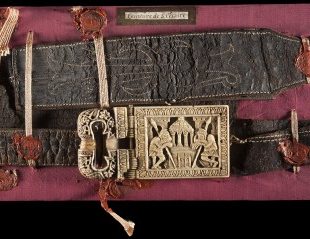
«Dilectissimo fratri Caesario Symmachus»
From Arles to Rome, the relics of St. Caesarius, treasure of Paleo-Christian Gaul
Pius-Christian Museum, Vatican Museums
Historical links, strong and ancient, between Arles and Rome have now led the Vatican Museums and in particular the Department of Christian Antiquities and the Musée départemental Arles antique to conceive and realise, in the Vatican spaces of the Pius-Christian Museum, from 24 March to 25 June 2017, this small but precious exhibition that, from the very title «Dilectissimo fratri Caesario Symmachus». From Arles to Rome, the relics of St. Caesarius, treasure of Paleo-Christian Gaul seeks to evoke the strong dialogue and close relations between the Provençal city and the Urbs dating back from the early Christian age.
The exhibition, the first to be inaugurated by Barbara Jatta, new director of the Pope’s Museums, is curated by Umberto Utro, head of the Collection of Christian Antiquities, the departmental assistant Alessandro Vella, and Claude Sintès, director of the Musée départemental Arles Antique.
The exhibition, which inaugurates a rich scientific collaboration between the two cultural institutions, intends also to underline its important symbolic value by paying tribute to Caesarius, bishop of Arles from the beginning of the sixth century, a great humanist, a great saint, and a great scholar who in his time was received in Ravenna by King Theodoric and in Rome by Pope Symmachus.
The five sections in which the exhibition is divided will compare, in a sort of “dialogue beween art collections”, the relics of St. Caesarius and evidence of his veneration, all of Arlesian and Provençal origin, with works from the Vatican collections, with the exception of a gold necklace with a Christological monogram, currently in the National Roman Museum. A valuable codex of Carolingian origin will also be on display (an extraordinary loan from the Vatican Apostolic Library), which bears the text of the letter that Pope Symmachus wrote to Caesarius, and whose opening words inspired the title of the exhibition.










